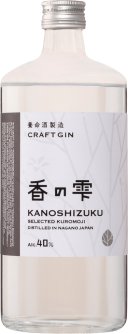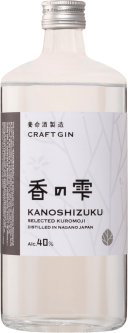Tohoku Meijyo Hatsumago JunmaiDaiginjo Kagaboshi
"Kagaboshi" is a dialect unique to the Shonai region of Yamagata Prefecture, where the brewery is located, and means "dazzling" and "I can't keep my eyes open because it shines." Junmai Daiginjo made with 100% Dewa Sansan, named after the shining rice. The junmai daiginjo brewed this winter has a deep and mellow taste after being squeezed and aged quietly in the brewery. The fragrance is not too gorgeous and has a well-balanced volume as Junmai Daiginjo. Of course, this sake is also kimoto-zukuri, which can be said to be the symbol of the Hatsumago. When raw, it may be heavy, but it is a sake that goes well with food without any dullness. If you drink it chilled, be careful not to let it cool too much, as it will have a slightly bitter taste. The refreshing scent of ginjo and the swelled taste are in perfect harmony. It's perfect for delicious autumn dishes.
Igarashi Shuzo Tenransan Momoiro Nigori Sake
Igarashi Shuzou Brewery is in the Saitma Prefecture located at the confluence of the Naguri and Nariki Rivers. This is a rare sake produced using pink yeast. There are two companies within the prefecture, including Igarashi Shuzo using this pink yeast. Pink yeast is very delicate, to the point the pink colour becomes less noticeable when mixed with even the slightest difference in yeast. Because of this delicacy, special tools are used for this sake and has been produced with such care to prevent other yeasts from contaminating it. Don't let cute pink colour fool you, this sake is not as sweet as it looks. It has a balance of sweet and sour taste.
Heiwa Shuzo Tsuru-ume Suppai Umeshu
Tsuru-Ume series are brewed and blended with the long experience and the rich skill and recipe in the liquor sprits brewing works of Heiwa Shuzou brewery. The most specific idea of living in this modern world stands on the understanding of “Lifestyles of Health and Sustainability.” In this idea, the Tsuru-Ume series are hand-crafted in the concept of LOHAS style. That is why this series is not for mass production and easy consumption. You will know it when you try! Among the products produced in Wakayama prefecture, Heiwa Shuzo Tsuru-ume Suppai Umeshu is a new plum sake from Wakayama Prefecture, the plum heartland of Japan. The Heiwa Shuzō brewery has its own orchards and sticks to the principle of slow-brew. For this exquisite and full-taste umeshu, three times more plums have been used than usual in this recipe and the plums have been kept in the sake for 3 years, giving extra plum taste and aroma and making it extra sour or 'Suppai'. Cool it and enjoy it straight or on the rocks. After opening, store in a refrigerator and drink as soon as possible.
Suntory Kakubin Blended Japanese Whisky
This premium Japanese whisky is nicknamed Kakubin meaning 'square bottle derived from the bottles unique design. Launched in 1937, Kakubin has since become the blended whisky of choice for casual drinkers and connoisseurs across Japan. Kakubin is a highly drinkable whisky, very moreish with a touch of honey and pepper on the finish.
Choya Extra Year
Using 100% Japanese premium plum fruits called Nankobai from Kishu, Wakayama, this is a premium Umeshu with the taste of richness, depth & elegance. Also the color is more golden & amber. As a aperitif or a desert, you can always enjoy CHOYA Extra Years with over ice.
Akashi-Tai Junmai Daiginjo Genshu
One of the finest luxury sakes around,this medium-bodied hand-made artisan sake is produced using fine highly-prized Yamadanishiki rice grown in a district of Hyogo. Polished to the highest leve until only 38% of the grain remains, it is fermented in small batches for two months. The complex nose exhibits nuances of melon, lemon, bitter orange and green grass. The palate is superbly balanced with crystallised notes of tropical fruit and citrus with a thread of subtle umami on a long-lasting finish.
Kanoshizuku Distilled Gin
A uniquely crafted artisan gin from the Yomeishu distillery combines 11 botanicals dominated by Kuromoji or Lindera umbellata, an aromatic tree native to Japan. The gin combines two spirits, one distilled with the fresh fragrant Kuromoji and the other with the final ten botanicals, including the obligatory juniper. The final result is a complex gin that is elegant and fresh as a green forest with the scent of Kuromoji and characters of citrus, juniper and spice. Drink it on the rocks or as a base for a martini.
Tenjaku Japanese Gin
The production takes place in Fuefuki, a region rich in natural resources and surrounded by mountains: two national parks to the north and west, and the spectacular Mount Fuji to the south. Concentrated spring waters emerge in this valley after passing the subsoil with porous washing stones. A gin capable of transmitting the Zen spirit of Japan, bringing the human being into serenity and harmony with nature.
Heiwa Shuzo Tsuru-Ume Nigori Umeshu
In this Nigori (cloudy) Umeshu made with Nanko Ume fruit from Wakayama, the pulp from the macerated Ume fruit is added to the Umeshu liqueur to give the liquid added texture from the fruit itself. This has a wonderful aroma of Ume, a sweet yet tart character on the palate, full body and a refreshing acidic finish. Great chilled on its own, or in a cocktail like a Spritz.
Oka Kuru Bermutto Sake Dry Vermouth
Product Information: Oka Kura Bermutto is a uniquely Japanese take on the category of vermouth made from aromatised, shochu-fortified sake. Technically it's not a vermouth because it is not wine-based, but it works in cocktails as a vermouth should—as a botanically-infusing, low ABV modifier— that bridges a gap between sake, shochu, and vermouth. Oka Kura Bermutto is essentially a dry vermouth. There are four botanicals used in the production of Oka Kura: Yuzu, Kabosu, Sansho peppercorn, and Yomogi. Yuzu is an acidic aromatic citrus as acidic as a lemon with a flavour that's reminiscent to lemon, grapefruit, and Mandarin orange. Kabosu is a very high-acid citrus profile and flavour similar to yuzu and lime. Sansho peppercorn is a peppery and slightly citrusy peppercorn that's relative Sichuan peppercorn only it produces are milder, numbing sensation on the palate. Lastly there's Yomogi – A Japanese wormwood, also known as Japanese mugwort. FYI: Bermutto is a Japanese phonetic spelling of vermouth. The Japanese language has no “v” sound, so the v's in foreign words are written and pronounced with “b” instead. Maker: Founded by Yuno Hayashi and named for her grandfather, OKA BRAND offers a growing range of distinctly Japanese spirits and liqueurs made from local rice spirits, Junmai sake, and hyper-regional botanicals. Each expression provides not only endless drinking possibilities, but a gateway to Japanese flavors and traditions. Distillery: OKA BRAND spirits and liqueurs are produced by the legendary Tsutsumi Distillery in the Kumamoto Prefecture in Kyushu, Japan. Tsutsumi has been producing shochu for nearly 150 years in the Hitoyoshi Basin just 5 km from the Kuma River, the longest river in Kyushu. It is one of only 28 distilleries certified by the World Trade Organization as a Kuma Shochu producer, a designation similar to the protected designations of origin of Scotch, tequila, and Cognac. The Kuma River is renowned for its reputation as the clearest stream in Japan, lending itself to crafting fine sake and shochu, all from rice grown within the Kuma River system. Influenced by the fortified, aromatized wine producers of Europe while drawing on Japanese tradition, OKA BRAND took the cocktail world by storm with the introduction of their flagship expression, Bermutto. A yuzu liqueur and sweet, ume-based formulation of Bermutto followed, and now with the introduction of rice-based vodkas and gin, OKA offers an even wider range of exceptional products for use in cocktails by the world’s most discerning bartenders and mixologists. Nose - Yeast, Tropical Fruits, Lavendar The nose is fruity and yeasty with notes of grapefruit, peach, guava, lavender, and plum. Palate - Rice, Faint Plum, Piquant Peppers On the palate, the sake base is immediately evident with base notes of rice, yeast, and faint plum. Yuzu and sansho peppercorn brighten things up. Finish - Yuzu, Grapefruit, Pleasant Bitters An undercurrent of yomogi provides earthy grapefruit from beginning to end.











